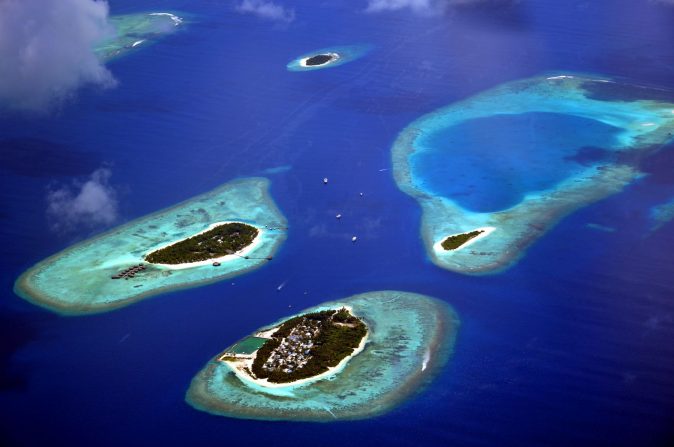Environment / Maldives
Preserving the delicate natural beauty of the Maldivian atolls
Plastic bottles, discarded fishing nets and fuel leaks have become a common sight in the Maldives.

BY: CAROLINE VIEIRA LIMA
caroline@the-businessreport.com
For decades, the topic of discussion among resort managers in the Maldives has dwelled on who offers the most luxurious amenities and exclusive innovations, from water bungalows to underwater restaurants. That discourse has now changed, and sustainability has come to the center of concerns among resort operators.
As Martin Van Der Reijen, VP of operations at Crossroads pointed out, “sustainability has become an issue for the industry now because plastic bottles have started showing up at the beaches of five-star resorts. That has made it
a fundamentally commercial issue, which has resulted in much more consistent attempts at addressing it”.
Tragically, the pristine beaches and coral reefs of the Maldives are facing adverse side effects from the hundreds of resorts that populate them and the millions of visitors that enjoy them. Today, every beach of every resort, particularly
near Malé, needs to be cleaned daily to prevent guests from stumbling into plastic bottles, napkins or other types of waste. This is not a new problem, but only recently it has started to affect the country’s main source of income in such a visible way.
Wasted away
Twice as much as a resident of Malé
5 times as much as anyone in the rest of the Maldives
Nearly 5 times as much as the world average
The Maldives has a big waste problem. According to the chairperson of New York-based NGO Parley for the Oceans in the Maldives, Shaahina Ali, “more than 200 metric tons of garbage, mostly food waste, is dumped in the ocean every day”. The waste is sent to the country’s main waste treatment facility in Thilafushi, the infamously known “trash island”, is incinerated without any further processing, marking the horizon with a smoke column visible for kilometers.
It is hard to put the blame on just one actor, but with nearly four times more tourists visiting the Maldives every year than there are Maldivians, the hospitality industry is clearly among the main drivers of the problem. “People are not aware of just how much plastic they use, and with more tourists than locals coming to the Maldives every year, raising awareness becomes even more challenging”, Mrs Ali added. “Today, tourists actually produce substantially more waste than Maldivian residents”, she pointed out.
Some resorts are finally making the move towards cutting down on plastic and other polluting materials. There are considerable challenges, however. Even if the use of single-use plastics is reduced in the resort’s day-to-day activities,
all of the products are imported wrapped in layers of plastic, styrofoam or other form of packaging that will never serve other use. Exchanging plastic water bottles for glass bottles is now common practice, but it’s only a small step among many others needed.
Power generation is another relevant issue. A number of resorts have started to install solar panels to, at least in part, offset the fuel needed to power their diesel generators. However, “construction techniques in the Maldives are not ideal. Buildings lack proper thermal insulation, so cooling requires a lot more energy than it should, which in turn partly offsets efforts to rely on renewable energy”, Mr Van Der Reijen tells us. Construction of harbors and other infrastructure on the water is another major concern, as it disturbs the movement of sands and contributes to unbalance the area’s ecosystem.
Further, the sheer number of tourists flocking the main snorkeling points to swim with manta rays, turtles and sharks, is a cause for concern. Seeing 50 odd tourists following a single turtle around the coral reefs is not an uncommon sight, with serious consequences over the well-being of the fauna and the flora. Many resort operators and diving centers have started to lobby for stricter limitations to the number of visitors at popular diving spots, in an effort to reduce the pressure on these ecosystems. After all, these spots continue to attract visitors from all around the world, and industry players are conscious of the need to protect them.
New options
Some operators have opted for developing resorts that strike a balance with their environment, cutting down on the use of polluting products, making use of renewable energy, building marine preservation centers and promoting environmental education as well as eco-friendly behavior among its staff as well as its visitors. They respond to the desires of more eco-conscious guests, a growing trend among travelers around the world.
More and more, the need to guide and regulate environment-impacting behavior among locals and visitors becomes apparent for industry leaders.
It is evident that comprehensive efforts, which encompass the government, the resorts and the tourists, are necessary to address the issue of environmental sustainability. Nevertheless, placing the issue of human impact on the ecosystem
at the center of the public debate represents an unquestionable progress in the right direction.
